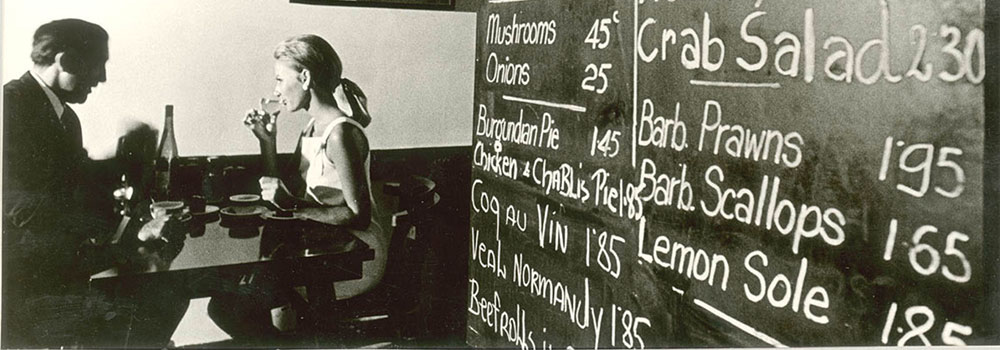
Oscar Wilde is credited with the quote “The cynic knows the price of everything and the value of nothing.”
Today, many of us confuse the meaning of the word “value” with the word “price”. Or maybe the word “cost.” However such terms mean very different things. Especially in business.
Speak to a group of marketing people (even if it may be something I wouldn’t wish my worst enemy). Ask them what, in their opinion, would be the criteria for something to be perceived by potential buyers as having a high “value for money” rating.
I’d bet most of them would tell you that the product in question needs to either be either:
- Cheaper than the competition’s offering
- Offering “more” than the competition
Of course in the real world the perception of what constitutes “value” is more subtle, and a lot more subjective. Just by pricing your widgets 25% cheaper than the ones sold by the guy down the street doesn’t mean that everyone’s going to buy your widgets and no-one’s going to buy his.
Why not? Because some customers will have their own rationale why they will continue buy from him and not from you. Perhaps some people value the fact he offers online ordering, or free delivery. Perhaps he puts his widgets in a nicer-looking package than yours.
Price is not the same as value
Whatever the reason, some buyers prefer to buy from him, even if he’s more expensive than you. The reason doesn’t have to make sense to you, as long as it makes sense to them. They’re buying for reasons other just just price. They see ‘value’, over and above what is being sold.
The fact is, nobody would buy any product or service – at whatever price it was sold at, from whatever business – if they didn’t see the ‘value’ being demonstrated as part of the transaction. Price may be one thing, but value is everything.
Value has little to do with price. A corkscrew is inexpensive to buy, but if you’re trying to get into a bottle of wine it has immense value. Similarly just because something costs more than its peers doesn’t mean it’s poor value. If it did, nobody would buy an Apple computer, or a BMW automobile, or an IWC watch. Every brand that exists today has ‘value’ to someone. Otherwise the brand would not exist.
The only reason that a product or service absolutely needs to be cheaper, or offer more for less, is when it is deemed to be a commodity. An item can be considered a commodity when it has no other inherent communicable “value” that its market would pay for, other than its price in relation to the competition.
Price is what you pay. Value is what you get.
For example, I don’t care what brand of paperclips I buy. I’m guessing you probably don’t care much either. If I’m in the market to buy paperclips, I’m simply looking for the best deal. If you make paperclips and want me to buy from you, you need to communicate your value. You need to show me how your paperclips are ‘better’ than the ones I’d otherwise buy. If you can’t, then you need to price them cheaper if you’re to get my business.
But the problem with selling a commodity is that there’s always someone, somewhere, who’s prepared to sell it cheaper. With price as your biggest differentiator, you’re in a race to the bottom.
Supermarkets, for example, often work on the loss-leader principle. They’ll sell daily staples, such as milk or bread, for less than it costs to buy them. The goal is to use such low pricing as an enticement to get more customers through the door. Once they’re in, the supermarket is gambling on these customers buying other stuff while they’re in the store. The profits made for the other items offsets the losses made on the bread and milk, evening-out the profit-per-customer statistics.
Commodity Pricing Wrongly Equates “Value” With “Price”
Today, for any small business marketing their products or services, there’s no future in selling something perceived by customers as a commodity. That space has been monopolized by the giant brands. You’re extremely unlikely to win going up against Coca-Cola or Pepsi with your own cola drink, for example, assuming you plan to compete with them head-to-head.
In order to prevent your business value from being commoditized, it’s essential to position your product or service in a way that creates merchantable value in the minds of your audience. Enough value that they’ll pay good money for what you’re selling, even if they can buy something similar from somewhere else.
Perhaps your cola drink is manufactured locally, your bottling plant is powered by solar energy, or 10% of your profits go to a social cause. Perhaps your differentiator is that you’re more honest and strive to deliver a better customer experience.
Creating perceived value in a product, company, or service is about creating something bigger than whatever it is you’re selling. It’s about creating a brand. A narrative, position, or cause that customers can accept, appreciate, and (if you’re lucky) align themselves with.
It’s not about “25% extra free.”
ABOUT THE AUTHOR

Gee Ranasinha is CEO and founder of KEXINO. He's been a marketer since the days of 56K modems and AOL CDs, and lectures on marketing and behavioral economics at two European business schools. An international speaker at various conferences and events, Gee was noted as one of the top 100 global business influencers by sage.com (those wonderful people who make financial software).
Originally from London, today Gee lives in a world of his own in Strasbourg, France, tolerated by his wife and teenage son.
Find out more about Gee at kexino.com/gee-ranasinha. Follow him on on LinkedIn at linkedin.com/in/ranasinha or Instagram at instagram.com/wearekexino.
Recent articles:
How Behavioral Science Thinking Improves Marketing Effectiveness

Dark Social: The Hidden Conversations Marketers Can’t See

Marketing In A Recession: How To Weather The Storm

How To Convince A Marketing Skeptic

Privacy Protection: Why Ad Tracking Must End

Marketing Isn’t About Being Brave: It’s About Being Effective

